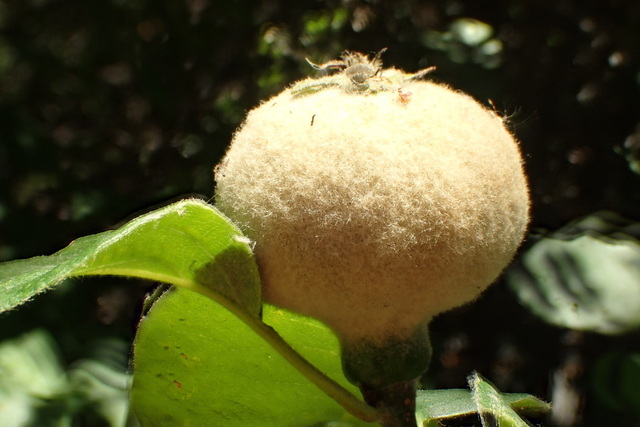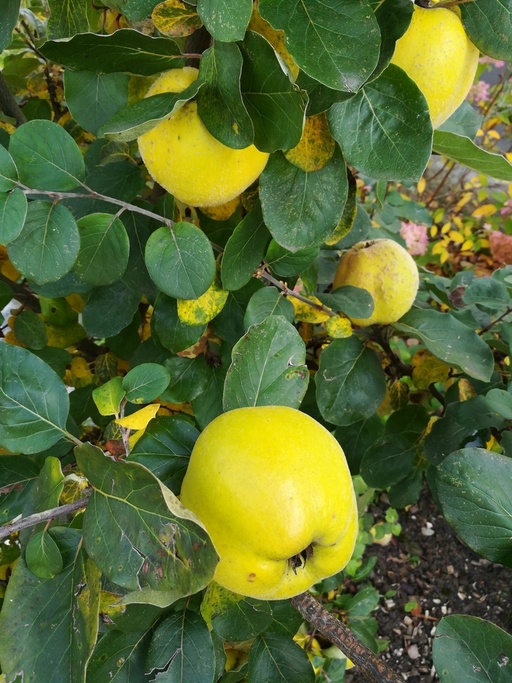Cydonia oblonga, commonly known as quince, is a fruit that, despite its resemblance to pears and apples, offers a host of unique benefits that distinguish it in the world of fruits. Native to the Middle East and parts of Central Asia, this yellow, fragrant fruit has been celebrated for centuries, not only for its distinctive taste but also for its wide-ranging medicinal properties. In this comprehensive article, we will explore the numerous health benefits, nutritional profile, and uses of Cydonia oblonga, as well as its remarkable healing properties.

Cydonia oblonga, often referred to as quince, belongs to the Rosaceae family and is the only species in the genus Cydonia. This deciduous tree or shrub typically grows between 5 to 8 meters in height and produces large, pear- or apple-shaped fruit that is fragrant and yellow when ripe. Quince is known for its acidic, tart taste, making it unsuitable for raw consumption unless it is ripe, as the fruit is very hard and sour when unripe.
The Cydonia oblonga tree is a small to medium-sized deciduous tree or shrub with a smooth, gray-brown bark. Its branches are slender and often covered in fine hairs, which give the tree a soft, velvety appearance. The leaves are broad, oval to elongated, with a deep green top and a silvery-gray underside due to a dense layer of woolly hairs. The tree thrives in temperate climates and prefers well-drained, slightly acidic soil. Quince is cold-hardy and can withstand temperatures as low as -25°C, making it ideal for regions with cold winters.
The fruit of Cydonia oblonga is a hard, yellow-green or golden-yellow pome that is typically harvested in the late fall. When ripe, the quince becomes highly aromatic with a citrus-like fragrance. The fruit has a tough, astringent texture when raw and is often too tart to eat without cooking. After cooking or processing, quince becomes soft, sweet, and flavorful, making it an excellent ingredient in jams, jellies, and fruit pastes, and even in savory dishes.
Cydonia oblonga is not only delicious but also packed with numerous health benefits. It has been used for centuries in traditional medicine across the world, especially in the Middle East, where it is known for its therapeutic properties.
Quince is an excellent source of vitamin C, a potent antioxidant that helps protect cells from oxidative damage caused by free radicals. Vitamin C also supports the immune system, aids in the production of collagen (a key structural protein in the skin), and helps reduce inflammation. With a high vitamin C content, Cydonia oblonga is beneficial for boosting immunity and fighting off infections, particularly during cold and flu season.
The fruit of Cydonia oblonga contains significant amounts of dietary fiber, particularly pectin, a soluble fiber that can aid in digestive health. Pectin helps regulate bowel movements, prevents constipation, and supports the gut microbiota. Additionally, quince has mild astringent properties that can help alleviate symptoms of diarrhea and gastrointestinal distress, making it an excellent natural remedy for digestive issues.
The high content of antioxidants, including flavonoids and phenolic compounds, found in Cydonia oblonga helps reduce inflammation in the body. These compounds have been linked to various health benefits, including reducing the risk of chronic diseases such as heart disease, diabetes, and certain types of cancer. The antioxidants in quince may also help slow the aging process by protecting the skin from oxidative damage.
The antioxidants and fiber found in Cydonia oblonga play a significant role in supporting cardiovascular health. By reducing oxidative stress and inflammation, quince can help lower the risk of heart disease. Pectin in quince also aids in lowering cholesterol levels, improving blood circulation, and maintaining healthy blood pressure. Furthermore, the potassium content in quince can help balance electrolytes in the body and regulate heart function.
Quince is known for its detoxifying properties. The fruit contains both soluble and insoluble fiber, which helps to cleanse the digestive tract, eliminate toxins, and prevent waste build-up in the colon. The fruit also has diuretic properties, helping to remove excess fluid from the body, which can reduce bloating and water retention.
Due to its high fiber content, Cydonia oblonga can promote satiety and prevent overeating by slowing the digestion process. Consuming quince as part of a healthy diet can help control hunger and contribute to weight loss or maintenance. Its natural sweetness can also help satisfy sugar cravings in a healthier way compared to refined sugars.

Cydonia oblonga is a highly nutritious fruit, providing a wealth of vitamins, minerals, and dietary fiber. Below is a breakdown of the key nutrients found in quince:
Calories: Low in calories, making it suitable for weight management.
Vitamin C: A potent antioxidant that supports the immune system.
Dietary Fiber: Supports digestion, promotes bowel health, and helps in controlling cholesterol levels.
Minerals: High in potassium, magnesium, and calcium, which support heart and bone health.
Antioxidants: Flavonoids and phenolic compounds that fight oxidative stress and inflammation.
While Cydonia oblonga is rarely eaten raw due to its tartness and hardness, it is highly versatile in cooking. Common culinary uses include:
Quince Jam and Jelly: One of the most popular uses of quince, turning the fruit into a sweet, tangy preserve that pairs well with bread and cheese.
Quince Paste: Also known as membrillo, this thick paste is often served with cheese in Mediterranean countries.
Quince Wine: Quince can be fermented into wine, offering a unique flavor profile.
Quince in Savory Dishes: In many cultures, quince is cooked with meats such as lamb or chicken to add a fragrant sweetness to stews and roasts.
In traditional medicine, Cydonia oblonga has been used for its various therapeutic properties:
Respiratory Health: Quince has been used to treat coughs, colds, and asthma due to its soothing, anti-inflammatory properties.
Skin Health: The fruit is sometimes used topically in masks and creams to soothe irritated skin and reduce inflammation.
Liver and Kidney Detox: Quince has mild diuretic properties and is believed to support liver and kidney health by helping to eliminate toxins from the body.

Cydonia oblonga (quince) is a remarkable fruit that offers a variety of health benefits, from supporting digestive health to enhancing heart function and boosting immunity. With its rich content of vitamins, antioxidants, and fiber, it serves as a powerful ally in maintaining overall well-being. Whether used in cooking, as a natural remedy, or simply enjoyed as a health-boosting fruit, Cydonia oblonga is truly a "superfood" deserving a place in your diet.
By understanding the numerous health benefits and versatile uses of Cydonia oblonga, you can begin incorporating this fruit into your daily routine for its diverse nutritional and medicinal benefits. Whether you're looking to improve digestion, fight inflammation, or boost your immune system, quince offers a natural, healthy solution.
animal tags: Rosaceae
We created this article in conjunction with AI technology, then made sure it was fact-checked and edited by a Animals Top editor.